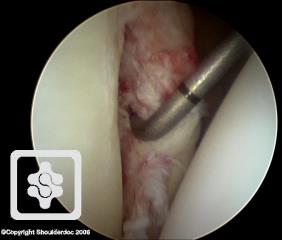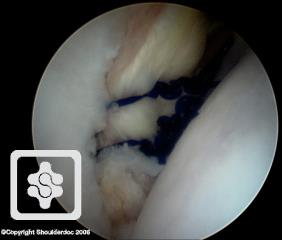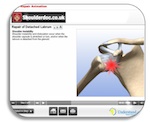Bankart Procedure
The operation involves reattachment and tightening of the torn labrum and ligaments of the shoulder (see pictures below). This usually done using sutures and small bone anchors.
The glenohumeral joint provides 60% of shoulder motion. It is a modified 'ball and socket joint'. The humeral head moves in a complex manner over the glenoid with a combination of rolling, gliding and sliding actions.
labrum and capsule around its rim (similar to a meniscus). The labrum is wedge-shaped and attaches almost completely around the edge of the glenoid. This creates a deeper cup for the glenoid socket. This is important because the glenoid socket is so flat and shallow that the ball of the humerus does not fit tightly. The labrum creates a deeper cup for ball of the humerus to fit into. This makes a contribution to the stability of the joint.
The labrum may become detached in patients with dislocations of the shoulder (causing a Bankart lesion ). For more information see Labral Tears .
An arthroscope is inserted through a small skin incision from the back of the shoulder and special instruments are inserted through portals (green) through the front of the shoulder. The surgeon can see the operation on a television screen.
Bankart tear as seen at arthroscopy:
![]() Final Repair:
Final Repair: 
 Interactive Animation Click Here
Interactive Animation Click Here
Some people who have dislocations due to loose shoulder joints (MDI) and no torn labrum may require a Capsular Shrinkage or Capsular Plication procedure.


